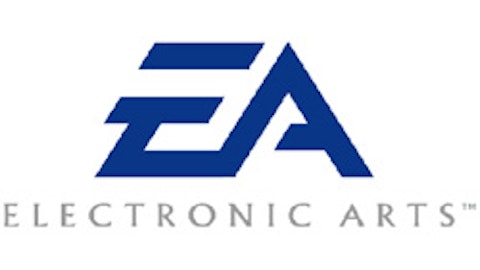Tesla Motors Inc (NASDAQ:TSLA) has, with little doubt, a good thing going right now. Shares of the automaker are up nearly 190% year-to-date, and its market cap is over $11 billion. And it only took 10 years. Tongue-in-cheek aside, the story of Tesla Motors Inc (NASDAQ:TSLA) is a remarkable one, and it may be the kind of story that shines a light on the evolution and transformation of the consumer market nowadays.
Like his innovations at Space X and PayPal, or at the red-hot solar player SolarCity, Elon Musk has developed a very different business model for Tesla Motors Inc (NASDAQ:TSLA), and he has taken a two-pronged approach.
The viral hype
Without a doubt, however, even the biggest Tesla Motors Inc (NASDAQ:TSLA) bull cannot deny that much of the company’s favoritism in the marketplace has to do with the company’s story, and where investors think it will be in another 10 years. This vision—filled with 3,000-mile EVs and supercharger stations in every town—starts and ends with Tesla Motors Inc (NASDAQ:TSLA)’s iconic CEO.
As we at Insider Monkey mentioned earlier this week, Elon Musk’s voice can be heard daily on Twitter, and some of his best tweets have to do with his thoughts on interstellar travel, the important of recognizing climate change, and his massive personal investment in the company; see Musk’s full purchase history here.
Heck, he’s even speculated on a Tesla Motors Inc (NASDAQ:TSLA) Truck on his long-run horizon, and talk of a $30,000 “Gen III” electric car for lower-cost consumers is rumored to be his next project. The primary point of Musk’s social media strategy is to garner positive attention from the mainstream media through a sort of “open-door” approachability, which has many market participants sold on Tesla as the quintessential Apple of the auto industry.
Word-of-mouth and advertising dollars
Equally as important lies a far less high-tech process. Lately, it seems that the auto dealership lobbyists have never been so busy. In North Carolina and Texas, Tesla cars are not allowed to be sold to residents of those states without a dealership as an intermediary, and there are other states considering similar legislation.
Why would this be such a big deal surrounding a company that is only projected to sell about 20,000 cars this year?
Well, it seems that Elon Musk also knows the art of word-of-mouth advertising and believes in being consumer-friendly, allowing car-buyers to purchase a vehicle the same way they would buy shoes or shirts or a toy for their child at Christmas: online, without sales people or having to pay for a brick-and-mortar building and the showroom vehicles.
Tesla is all about word-of-mouth. That is how the company has become an overnight phenomenon without doing nearly the amount of print and TV advertising that competitors like General Motors Company (NYSE:GM) and Ford Motor Company (NYSE:F) spend. Now, we will be among the first to admit that the world-of-mouth advertising didn’t go viral overnight; it was a building process, but Musk has worked wonders through social media outlets including the aforementioned Twitter, where he has more than 225,000 followers. Only the handful of stores and social media have been the catalyst for the growing popularity of the company and the stock.
According to Tesla’s spokeswoman Alexis Georgeson, the company has no immediate plans for paid advertising, because it hasn’t needed it to this point. “Right now, the stores are our advertising. We’re very confident we can sell 20,000-plus cars a year—without paid advertising. It may be something we’ll do years down the road. But it’s certainly not something we feel is crucial for sales right now,” she said.
How is this buzz controlled so well?
Jeremy Anwyl of Edmunds.com said that it’s Musk’s use of social media and the way he plays the Tesla story to the auto and general media that has generated much of the free advertising and PR.
“They’re selling very few cars when you think about it — but they are getting an awful lot of buzz,” she said, adding that Musk is “very Steve Jobs-like in how he deals with the media. A lot of the attention is not generated through what we consider traditional advertising. It’s really through social media.”
Key peers
Auto giants GM and Ford Motor Company (NYSE:F) spent over $5 billion in advertising dollars in 2011 alone, with most expecting that number to rise by the end of this year. General Motors Company (NYSE:GM) accounts for approximately three-fifths of this amount, and its decision to cut the $10 million it allocated to Facebook ads last year makes Tesla’s zero-bound strategy look even more startling. A closer peer, Nissan’s Leaf, was allocated more than $20 million on ads last year (via Kantar).
Additionally, much has been made about Tesla’s apparent overvaluation in comparison to Ford, GM and Toyota. For example, one analyst estimates Tesla trades at 17 times the value of these peers in terms of market cap per expected car sold. From a more traditional standpoint, Tesla sports a forward P/E of 94.4, far, far above the likes of Ford (9.3) and GM (7.9), for example, but we’d never short on valuation, and you shouldn’t either.
Innovation trumps valuation
Still, like Amazon, Tesla’s innovation requires investors to think about this company in an innovative manner. If the company can meet or beat Wall Street’s current-quarter revenue and earnings figures—analysts predict $393 million on the top line and EPS of $-0.14—there’s more appreciative potential here.
Robert W. Baird recently upped their price target on Tesla to $118, an upside of more than 20% of current levels. Critics may claim that shares are overvalued by traditional metrics, or that Elon Musk’s charm is all hype, but until something drastic changes in the company’s marketing strategy, expect more of the same buzz.
Disclosure: None






